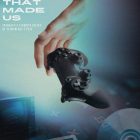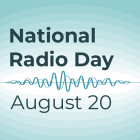×
SparkFun will be closed on Tuesday, December 24th, and Wednesday, December 25th, in observance of the Christmas holiday. Any orders qualifying for same day shipping placed after 2:00 p.m. (MST) on Monday, December 23rd, will be processed on Thursday, December 26th, when we return to regular business hours. Wishing you a safe and happy holiday from all of us at SparkFun!
Please note - we will not be available for Local Pick up orders from December 24th-December 27th. If you place an order for Local Pick-Up we will have those ready on Monday, December 30th.
RalphHightower
Member Since: May 11, 2022
Country: United States
-
Other than price, how is the SparkFun RTK mosaic-X5 different from SparkFun RTK Reference Station - GPS-22429 - SparkFun Electronics?
-
Amen. I'm probably about the same age as you. We grew up in remarkable times. I followed NASA from Mercury, through Apollo and the moon landing. On the 50th anniversary of the first moon landing, NASA replayed the audio of Apollo 11 on the internet. A coworker who only knew of the moon landing from history books, got interested in the audio replay.
Veterans Day weekend 2016, I met the commander of the final Space Shuttle mission. I told him that Atlantis was the second final launch that I saw, and checking off a thirty year old bucket list. That intrigued him. Chris: "Was it Apollo 17, the last moon mission?" Me: "No." Chris: "Skylab?" Me: "No." Chris: "Okay, what was it?" Me: "Apollo/Soyuz." Chris: *"That was the final flight."
-
Since Lauren brings up the TI-89, I'll contribute my favorite tech item. Hewlett-Packard RPN calculators. I was a freshman engineering student at USC, the University of South Carolina. HP introduced their HP-35 calculator. I couldn't afford it at the time, but I bought their HP-45. After I married in 1977, I couldn't balance our checkbook using Paula's algebraic calculator, so I bought her an HP-16C, which still works to this day. I have since bought an HP-67, HP-41CV, HP-41CX, with the 41's card reader/writer, and an HP-48GX that I bought at a pawn shop. Since it appears that HP has exited the calculator market, I started hoarding their RPN calculators, HP-12, HP-12P, HPZ17B.
As HP was fond of saying in their print advertisements, "HP has no equal."
Another tech item that I bought in 1980, was the Canon A-1, an innovative camera that offered aperture priority, shutter priority, program mode, stopped down metering, and manual exposure. All of the other cameras just offered aperture priority exposure.
-
Has anyone hooked up and use the wheel ticks and direction?
-
For National Radio Day, how about this tribute to NASA's Voyager 2 spacecraft for having the longest distance to communicate. Currently, Voyager 2 continues its mission, more than 12 billion miles from Earth, so distant that a signal from the spacecraft takes 18 hours to reach Earth, and just as long for a return signal to reach the craft. Engineers expect that Voyager 2 will continue to return data until about 2025. https://www.jpl.nasa.gov/news/45-years-ago-voyager-2-begins-its-epic-journey-to-the-outer-planets-and-beyond













